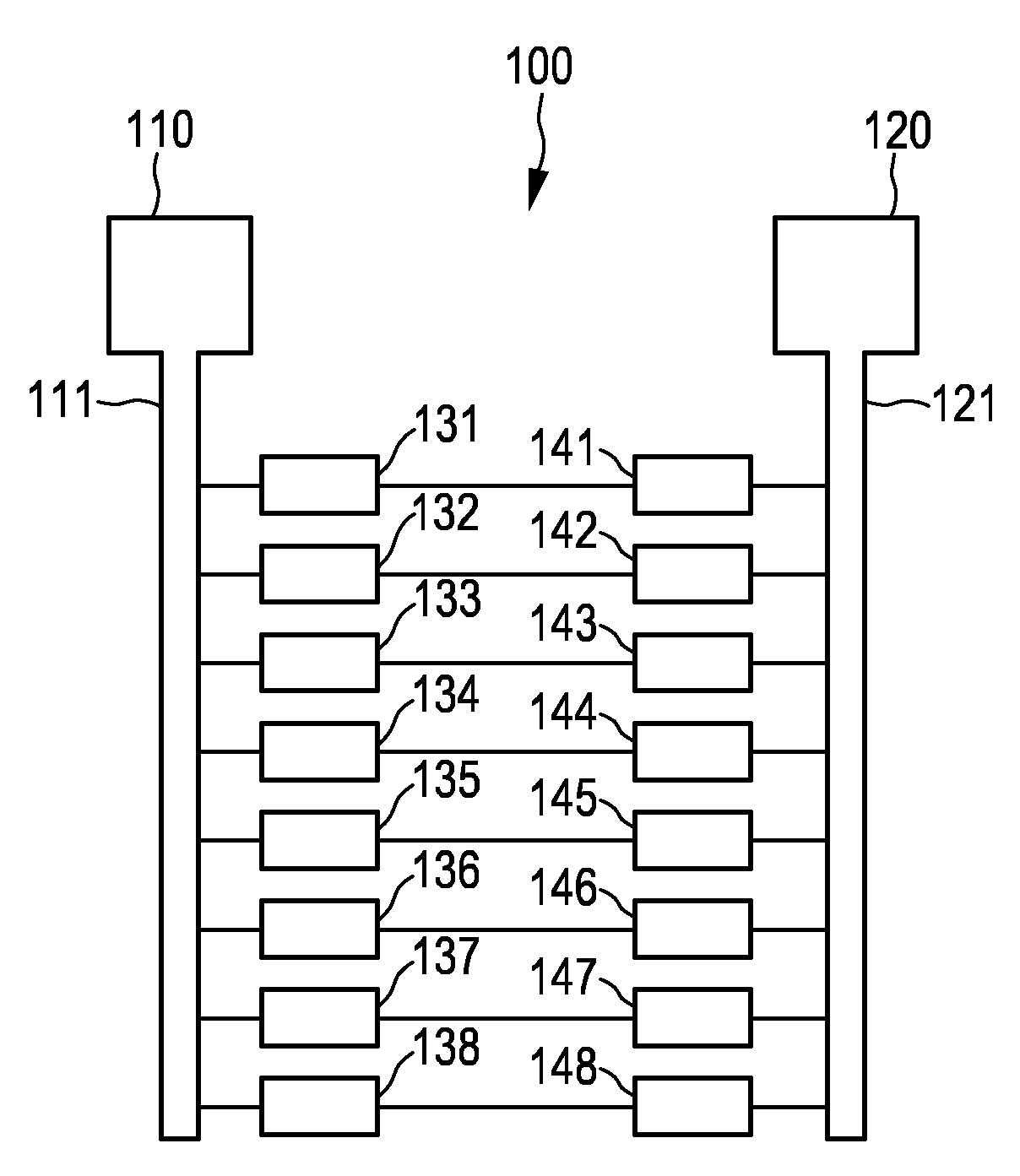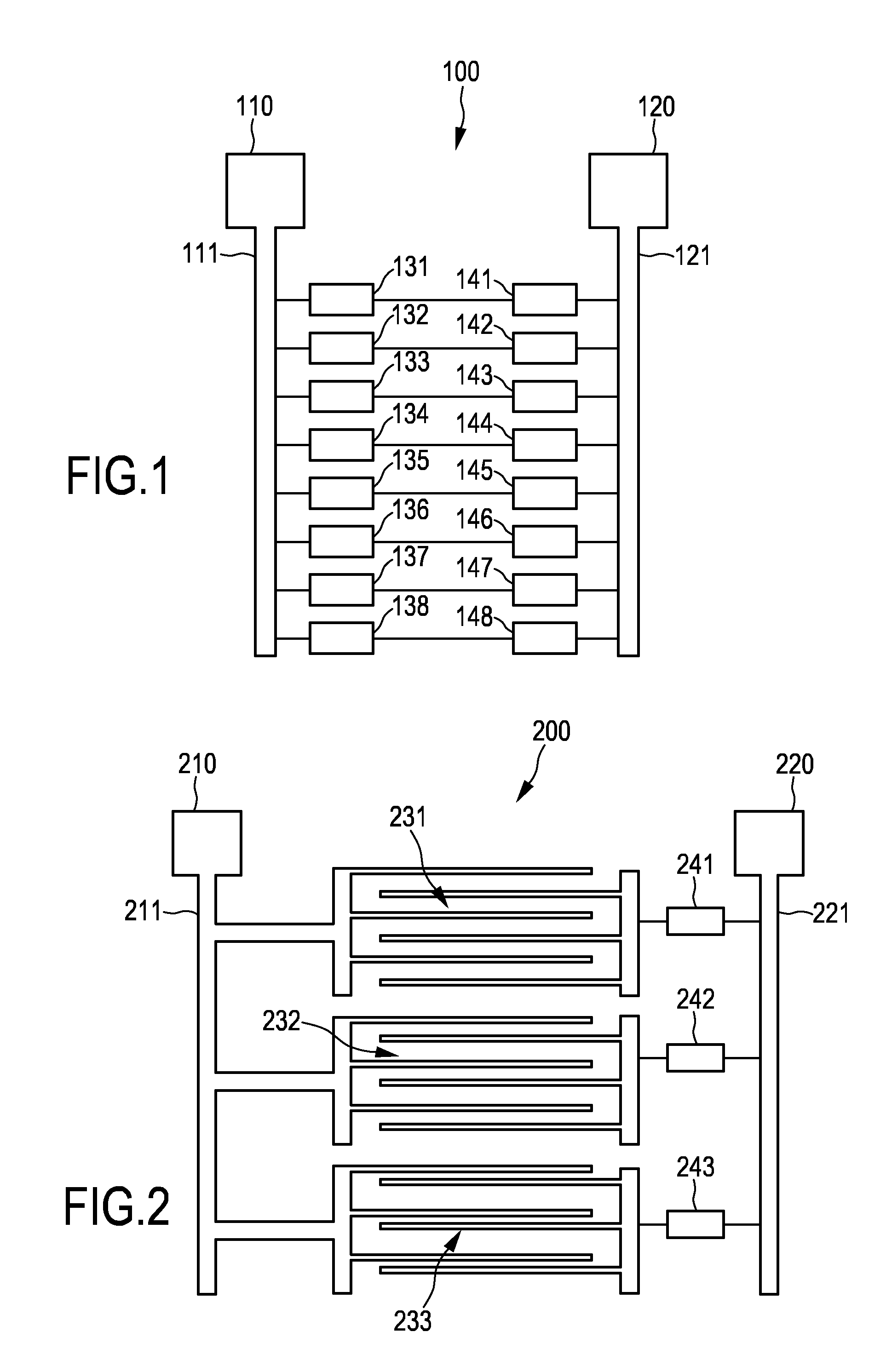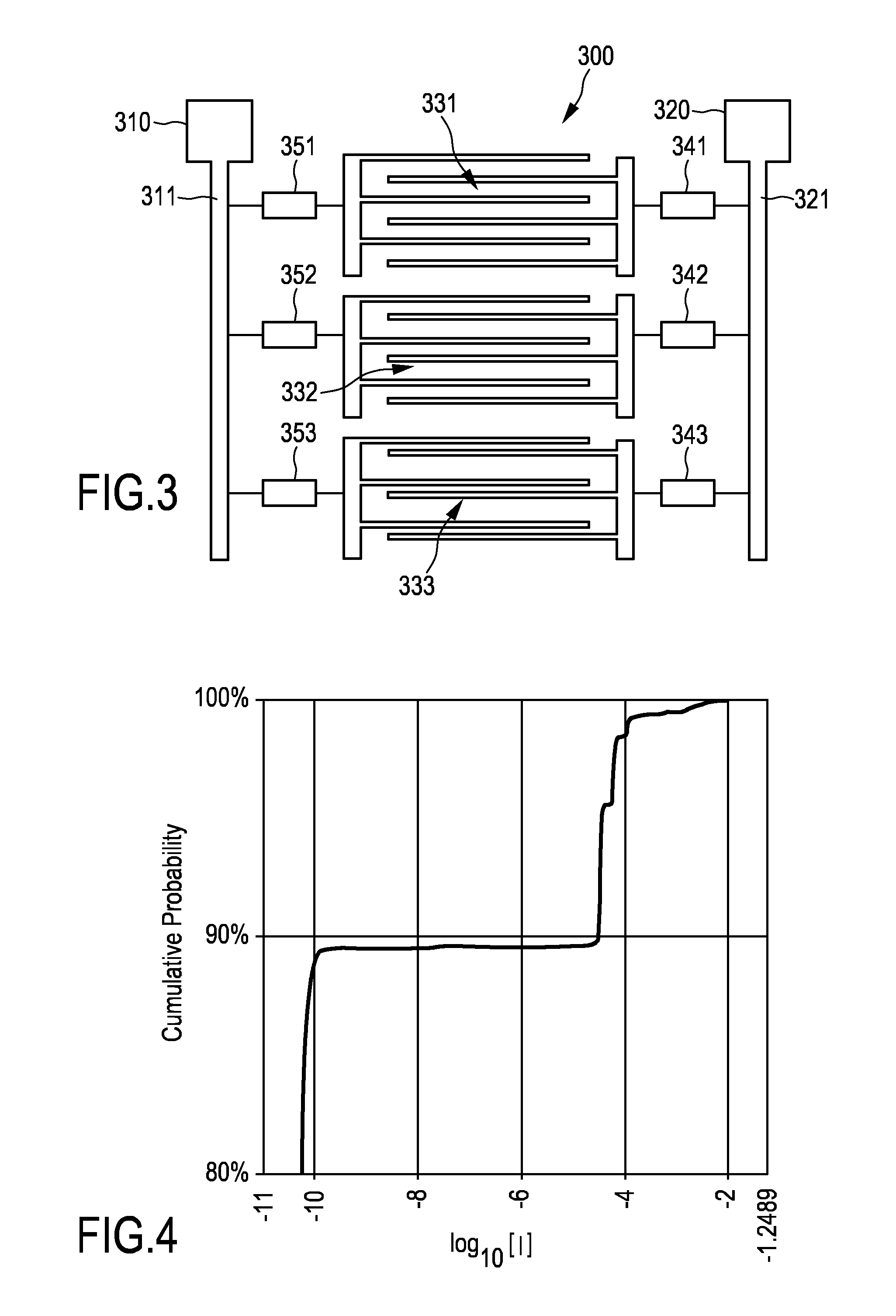Test structure for detection of defect devices with lowered resistance
- Summary
- Abstract
- Description
- Claims
- Application Information
AI Technical Summary
Benefits of technology
Problems solved by technology
Method used
Image
Examples
Embodiment Construction
[0074]FIG. 1 shows a schematic view of an embodiment of a test structure 100. The test structure 100 comprises a first test contact pad 110, which is connected with a first conducting line 111. Furthermore, the test structure 100 comprises a second test contact pad 120, which is connected with a second conducting line 121. The first and second conducting lines 111 and 121 are parallel to each other and rectilinear, and preferably arranged on an identical metal level. DUTs 131 to 138 branch off in parallel from the first and second conducting lines 111 and 121.
[0075]The DUTs are shown as blocks in the schematic representation of the test structure of FIG. 1. The DUTs may take the form of, for example, comb-comb structures, diodes, transistors, varistors, capacitors etc. The DUTs are drawn as 2-terminal devices in FIG. 1. However, the can contain dependent or independent additional terminals. More specific examples of DUTs will be given below in FIG. 2 and FIG. 3 and the pertaining de...
PUM
 Login to View More
Login to View More Abstract
Description
Claims
Application Information
 Login to View More
Login to View More - R&D
- Intellectual Property
- Life Sciences
- Materials
- Tech Scout
- Unparalleled Data Quality
- Higher Quality Content
- 60% Fewer Hallucinations
Browse by: Latest US Patents, China's latest patents, Technical Efficacy Thesaurus, Application Domain, Technology Topic, Popular Technical Reports.
© 2025 PatSnap. All rights reserved.Legal|Privacy policy|Modern Slavery Act Transparency Statement|Sitemap|About US| Contact US: help@patsnap.com



